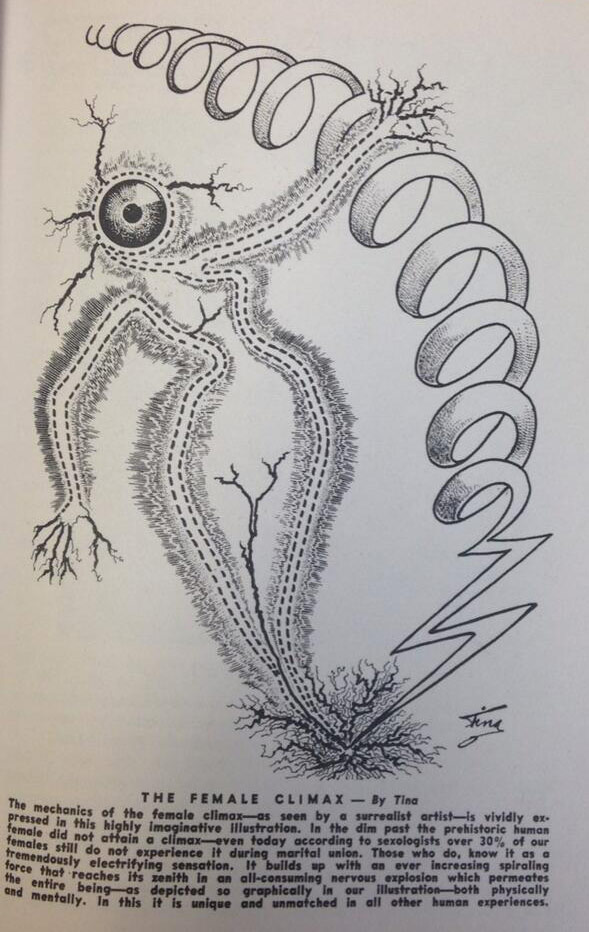
“Darkness increases freedom from constraints, which in turn promotes creativity,” report Anna Steidle of the University of Stuttgart and Lioba Werth of the University of Hohenheim. A dimly lit environment, they explain in the Journal of Environmental Psychology, “elicits a feeling of freedom, self-determination, and reduced inhibition,” all of which encourage innovative thinking. […]
However, the darkness-spurs-innovation equation did not always hold true. In another experiment, the researchers found “the darkness-related increase in creativity disappeared when using a more informal, indirect light instead of direct light.”
In this experiment, the light provided by the luminaire illuminated the ceiling and surrounding walls instead of providing a “top-down” light on the desk. Under those conditions, the dimness did not heighten a sense of freedom from constraints, and thus did not result in more creativity.
What’s more, the researchers note, innovation consists of two distinct phases: generating ideas, and then analyzing and implementing them. The latter requires analytical thinking, and in a final experiment, participants did better on that task when they were in a brightly lit room rather than a dimly lit one.
{ Pacific Standard | Continue reading }
psychology |
January 31st, 2014

Previous research has shown that men with higher facial width-to-height ratios (fWHRs) have higher testosterone and are more aggressive, more powerful, and more financially successful. We tested whether they are also more attractive to women in the ecologically valid mating context of speed dating.
Men’s fWHR was positively associated with their perceived dominance, likelihood of being chosen for a second date, and attractiveness to women for short-term, but not long-term, relationships.
{ Psychological Science | PDF }
related { Finger lengths as a key to desirability in romantic couples }
faces, psychology, relationships |
January 30th, 2014

Now add $1.99 per month subscription to connect Nest to Google services, and you’ve opened a lot more consumers to replacing their “ugly” thermostat, rather than paying the upfront $249 Nest one-off purchase cost. Which could allow Nest to work its way into millions of homes; this means that 56% of all electricity used, the monthly service that we all are forced to pay, will largely be monitored and controlled by one of the most powerful companies in the world: Google. […]
a shift from one-off product sales to services that will become essential to our everyday lives, things that we will pay for over and over again.
{ Pando | Continue reading }
economics, horror, technology |
January 28th, 2014

Children who had been praised for being smart became far more likely to view intellect as a fixed entity—determined at birth and stable throughout life—whereas those praised for effort became more likely to see it as a result of hard work that could improve and grow over time. […]
Dweck has found that people with a fixed mind-set—that is, those who believe that our intellect and abilities are determined by the luck of the draw at birth, and that nothing we do will change that—tend to perform worse over time. They are less motivated in their studies, have a harder time learning from mistakes, and perform less well in high school, college, and beyond. Those who see intelligence as malleable, on the other hand, can end up not only performing better and learning more from their failures but even raising their I.Q. scores by being more motivated.
{ New Yorker | Continue reading }
photo { Jean-François Lepage }
psychology |
January 26th, 2014

A current theory regarding language functions is that women use both hemispheres more equally, whereas men are more strongly lateralized to the left hemisphere. This theory is supported by fMRI and PET studies, but the strongest evidence is that after lesions to the left hemisphere men more often develop aphasia than women.
{ Wikipedia | Continue reading }
screenshot { Robert Bresson, Au hasard Balthazar, 1966 }
brain, genders |
January 26th, 2014
visual design |
January 26th, 2014

Typically, the loser of a bar fight who later initiates a lawsuit has been beaten up pretty badly, or at least has the medical bills to suggest significant personal injuries. The loser sues the bar on one of several theories — the most common ones being inadequate security, not having banned a patron known to have a history of fighting, bar employees initiating the violence, or bar employees responding to a situation with unreasonable force. But that’s the boring legal stuff. […]
Roughly equal numbers of men and women filed these lawsuits. […] Everyone I can remember had tattoos. […]
You might think that a bar fight is most commonly started between two guys fighting over a woman. That’s not so, at least not in my experience. Ejection seems to be a more precipitating event. More than half the bar fights I had to sort out started when a too-drunk patron was asked to leave and refused to do so. […]
Women were faster to employ weapons, whether prepared (the knife) or improvised. Improvised weapons are almost always thrown, and have included highball glasses, pool balls, bar stools, knives, and in one notable case, the assailant’s own feces.
{ ordinary-Times | Continue reading }
experience, fights, law |
January 26th, 2014

{ More art than literature, the new book “And Every Single One Was Someone” consists of the single word “Jew,” in tiny type, printed six million times to signify the number of Jews killed during the Holocaust. | NY Times | Continue reading | via gettingsome }
books |
January 26th, 2014
 Craigslist sperm donor told to pay child support
Craigslist sperm donor told to pay child support
Naked man walks into a bar with a bag of sex toys and asks, “What’s the problem?”
Gmail Glitch Is Causing Thousands Of Emails To Be Sent To One Man’s Hotmail Account
The Communicative Functions of Emoticons in Workplace E-Mails
What percent of your work day do you spend on email? 28%. Use email auto-analytics to tame your inbox.
Thirty-five of the YouTube accounts they took over were generating more than 6 million page views each month.
Efforts are underway to make your smart toilet—and other connected devices—less vulnerable to hackers.
How Silicon Valley’s most celebrated CEOs conspired to drive down 100,000 tech engineers’ wages
The “sharing economy” invokes vague leftist sentiments while moving towards more precarious employment.
American Botanical Council Publishes Revolutionary Analysis Unlocking Mysteries of Voynich Manuscript
This paper will explore how the Nazis tried to quell the demand for jazz music by creating a new, ideologically acceptable music. [PDF]
He identifies seven main factors of a state’s relative strength, the combination of which determines the chances of war
“Mr. Faulkner, you were saying a while ago that you don’t like interviews.”
The American Dialect Society’s recognition of because as Word of the Year has sparked a number of intriguing linguistic arguments.
An example of a snowclone is the phrase “grey is the new black,” which gave rise to the template “X is the new Y.”
How the U.S. Maps the World’s Most Disputed Territories
When Mary Ellis died in 1828, her family buried her in a peaceful patch of woods near a bend in the Raritan River. She’s still there, but the trees are long gone—her body now rests in the middle of a movieplex parking lot.
Photos of every New York City subway stop
Jean-Michel Basquiat, naked
North Korea confirms it has landed a man on the Sun
Patent Rat Exterminator, 1882
every day the same again |
January 25th, 2014

Since 1955, The Journal of Irreproducible Results has offered “spoofs, parodies, whimsies, burlesques, lampoons and satires” about life in the laboratory. Among its greatest hits: “Acoustic Oscillations in Jell-O, With and Without Fruit, Subjected to Varying Levels of Stress” and “Utilizing Infinite Loops to Compute an Approximate Value of Infinity.” The good-natured jibes are a backhanded celebration of science. What really goes on in the lab is, by implication, of a loftier, more serious nature.
It has been jarring to learn in recent years that a reproducible result may actually be the rarest of birds. Replication, the ability of another lab to reproduce a finding, is the gold standard of science, reassurance that you have discovered something true. But that is getting harder all the time. With the most accessible truths already discovered, what remains are often subtle effects, some so delicate that they can be conjured up only under ideal circumstances, using highly specialized techniques.
Fears that this is resulting in some questionable findings began to emerge in 2005, when Dr. John P. A. Ioannidis, a kind of meta-scientist who researches research, wrote a paper pointedly titled “Why Most Published Research Findings Are False.”
[…]
The fear that much published research is tainted has led to proposals to make replication easier by providing more detailed documentation, including videos of difficult procedures. […] Scientists talk about “tacit knowledge,” the years of mastery it can take to perform a technique. The image they convey is of an experiment as unique as a Rembrandt.
{ NY Times | Continue reading }
science, theory, uh oh |
January 25th, 2014

Why does life exist?
Popular hypotheses credit a primordial soup, a bolt of lightning and a colossal stroke of luck. But if a provocative new theory is correct, luck may have little to do with it. Instead, according to the physicist proposing the idea, the origin and subsequent evolution of life follow from the fundamental laws of nature and “should be as unsurprising as rocks rolling downhill.”
From the standpoint of physics, there is one essential difference between living things and inanimate clumps of carbon atoms: The former tend to be much better at capturing energy from their environment and dissipating that energy as heat. Jeremy England, a 31-year-old assistant professor at the Massachusetts Institute of Technology, has derived a mathematical formula that he believes explains this capacity. The formula, based on established physics, indicates that when a group of atoms is driven by an external source of energy (like the sun or chemical fuel) and surrounded by a heat bath (like the ocean or atmosphere), it will often gradually restructure itself in order to dissipate increasingly more energy. This could mean that under certain conditions, matter inexorably acquires the key physical attribute associated with life.
{ Quanta | Continue reading }
flashback, mystery and paranormal, science |
January 24th, 2014

Put it in the right place and sperm generally knows where to go. But researchers who use sperm in experiments have a harder time controlling where these swimmers end up. Put sperm onto a petri dish or glass slide, for example, and it’ll wander off in any direction it pleases.
Today, Alejandra Guidobaldi at CONICET in Argentina and a few pals say they’ve worked out a way to control the direction in which sperm swims to keep it on the straight and narrow. Their discovery could lead to new ways of generating a uniform stream of sperm and perhaps even a jet of the stuff.
{ arXiv | Continue reading }
science |
January 24th, 2014

Countries print 150 billion new notes each year, at a cost of about $10 billion. Cash attracts grime and dirt, gets stuffed into underwear drawers, is daubed with pens, and exposed to harsh UV light. In other words, money goes through a lot, with the result that 150,000 tons of it has to be destroyed annually.
As a new paper explains, one of the main problems with keeping money in good condition is sebum, the substance the body produces to protect the skin. Waxy and oily, sebum builds up on the surface of the paper and then reacts with the air, eventually turning bills a nasty shade of yellow.
The paper, published in an American Chemical Society journal, discusses a new process that might keep more notes circulating longer, and therefore cut the cost of printing and distributing new bills. It involves subjecting notes to supercritical CO2.
{ Fast Company | Continue reading }
image { Intricate mechanical and chemical separation is needed to extract and recover pigment from US currency. The ink is then re-stabilized, divided into individual doses and packaged into medical vials. | Diddo, The Cure for Greed }
economics, gross |
January 24th, 2014

“I want you to know…” or “I’m just saying…” or “I hate to be the one to tell you this…” Often, these phrases imply the opposite of what the words mean, as with the phrase, “I’m not saying…” as in “I’m not saying we have to stop seeing each other, but…” […]
Language experts have textbook names for these phrases—”performatives,” or “qualifiers.” Essentially, taken alone, they express a simple thought, such as “I am writing to say…” At first, they seem harmless, formal, maybe even polite. But coming before another statement, they often signal that bad news, or even some dishonesty on the part of the speaker, will follow. […]
Their use may be increasing as a result of social media, where people use phrases such as “I am thinking that…” or “As far as I know…” both to avoid committing to a definitive position and to manage the impression they make in print.
{ WSJ | Continue reading }
photo { Marek Chorzepa }
Linguistics |
January 21st, 2014

{ When a shopper enters Reebok’s flagship store in New York City, a face-detection system analyzes 10 to 20 frames per second to build a profile of the potential customer. The algorithms can determine a shopper’s gender and age range as well as behavioral and emotional cues, such as interest in a given display (it tracks glances and the amount of time spent standing in one place). Reebok installed the system, called Cara, in May 2013; other companies are following suit. Tesco recently unveiled a technology in the U.K. that triggers digital ads at gas stations tailored to the viewer’s age and gender. | Popular Science | full story }
faces, spy & security, technology |
January 21st, 2014

The news around shopping during the holiday season was dominated by two separate stories. One talked about how traffic to brick-and-mortar stores was well below expectations, and that these retailers were forced to discount tremendously to drive sales. The other talked about how an enormous late surge in packages coming from e-commerce companies overwhelmed the capacity of UPS and, to a lesser extent, FedEx, and caused many of these packages to arrive after Christmas.
But, to me, these two stories are not at all separate, they simply reflect different sides of the same narrative: We’re in the midst of a profound structural shift from physical to digital retail.
{ Jeff Jordan | Continue reading }
economics, technology |
January 21st, 2014





















